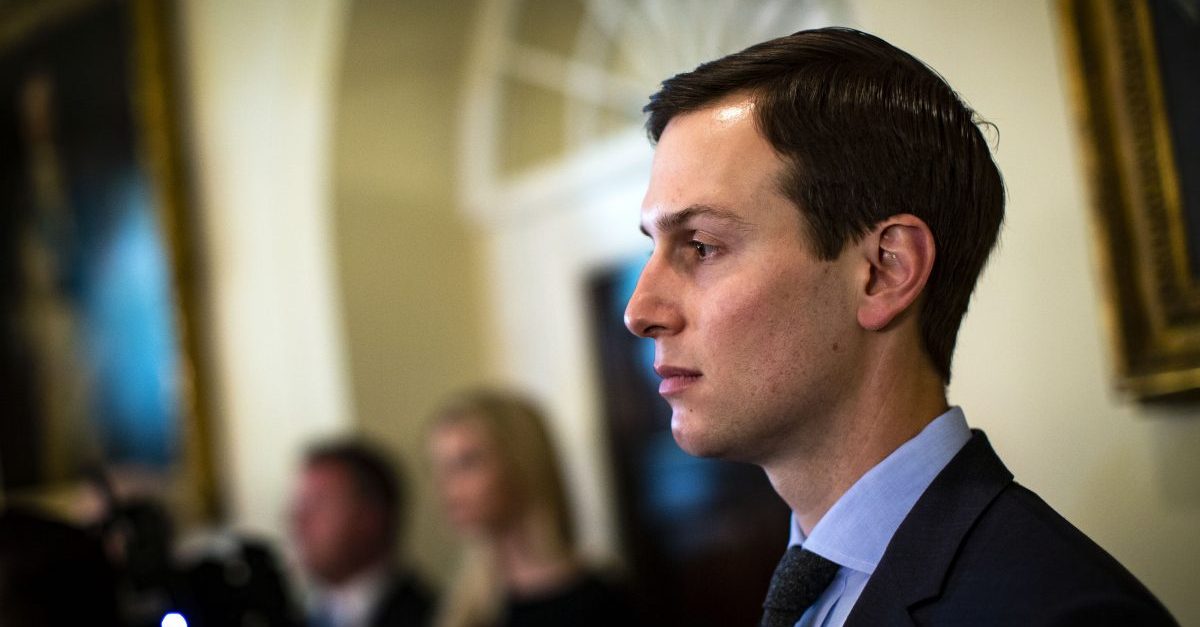
A new batch of memos from former special counsel Robert Mueller’s spectacularly underwhelming Russiagate investigation were released on Monday. As is often the case with Mueller’s work product, the memos are interesting because of what they don’t reveal.
A case in point is the FD-302 document compiled by Federal Bureau of Investigation (FBI) agents on presidential son-in-law and all around White House advisor Jared Kushner. An FBI 302 form is used to document the information relayed to the bureau during an official interview.
In Kushner’s case, however, the 302 is effectively completely redacted. The public has been provided almost no useful information—except, perhaps to the extent that speculation about the blacked-out contents leads people to conclude that Kushner’s FBI interview was particularly explosive and/or embarrassing, and/or potentially damaging for the Trump administration.
Here’s how the highly-censored 302 begins:
JARED COREY KUSHNER, date of birth (DOB) [redacted], was interviewed at his attorney’s office, Norton Rose Fulbright US LLP, 1200 New Hampshire Avenue, NW, Washington, DC 20036. Also present during the interview were KUSHNER’s attorneys [redacted] Senior Assistant Special Counsel Zainab Ahmed, and Senior Assistant Special Counsel Andrew Goldstein. After being advised of the identity of the interviewing agents, KUSHNER voluntarily provided the following information: [redacted]
Five paragraphs follow the initial recital and boilerplate language. Each paragraph is fully redacted under the purported authority of a Freedom of Information Act (FOIA) exemption based on the controversial b(5) catch-all exemption—and so claimed at the behest of Attorney General William Barr’s Department of Justice (DOJ).
The b(5) exemption is widely scorned and ridiculed by journalists and government transparency advocates as “The Withhold It Because You Want To Exemption.”
The statutory language provides:
(b)(5) exempts from disclosure inter- and intra-agency memoranda or letters that would not be available by law to a party other than an agency in litigation with an agency
Per journalism and FOIA clearinghouse MuckRock: “b(5) is a four-letter word in the FOIA community – that ‘Withhold It Because You Want To’ exemption line comes from an article from the National Security Archive’s Nate Jones that sums up the rampant use and abuse of b(5).”
DOJ guidelines are also pretty clear about the murky nature of the b(5) exemption—conceding that invocation relies on “opaque language” to frustrate FOIA requests.
Kushner’s 302 is a thoroughly illustrative example of the exemption’s breadth and why invoking the claim is generally considered an abuse of the FOIA process.
Eighteen additional paragraphs are redacted on the Kushner 302–each citing the b(5) exemption. Very little else is left.
“A few weeks after the election [redacted], KUSHNER, FLYNN, and KISLYAK met together at Trump Tower,” one portion of the 302 notes—a decidedly unilluminating disclosure which simply references an infamous meeting that’s long been reported on publicly before.
The last bit of actual information provides:
[redacted] KUSHNER [redacted] vaguely remembers FLYNN handling Russia on the issue. [redacted]
So, why all the hush-hush in regards to Kushner?
According to BuzzFeed News reporter and FOIA maven Jason Leopold: “The [government] told us intelligence agencies were reviewing Jared Kushner’s FBI interview summary for classified information and that is why it wasn’t turned over to us last month. But the redactions here are attorney client privilege (not deliberative process).”
[image via Al Drago-Pool/Getty Images]